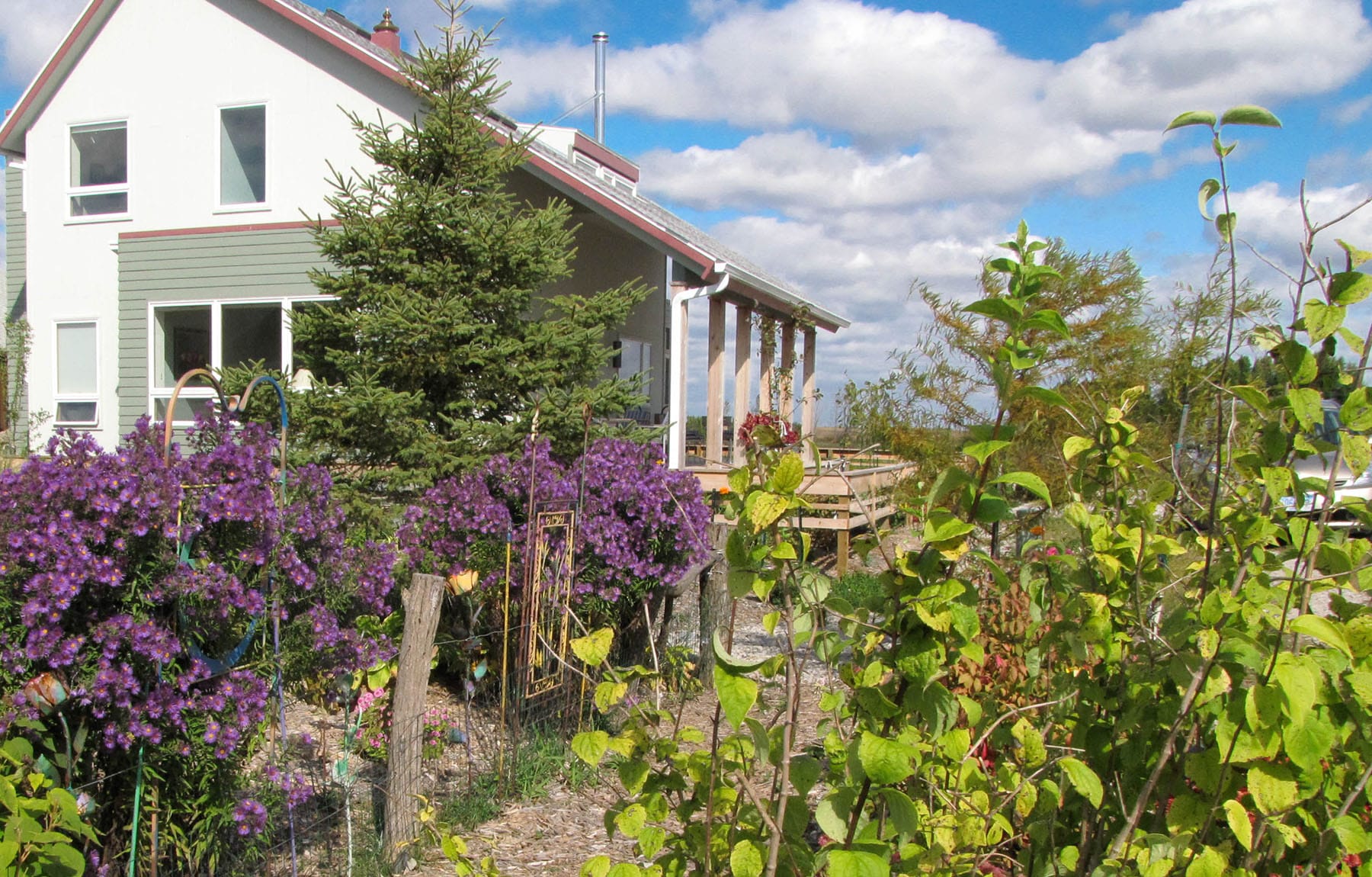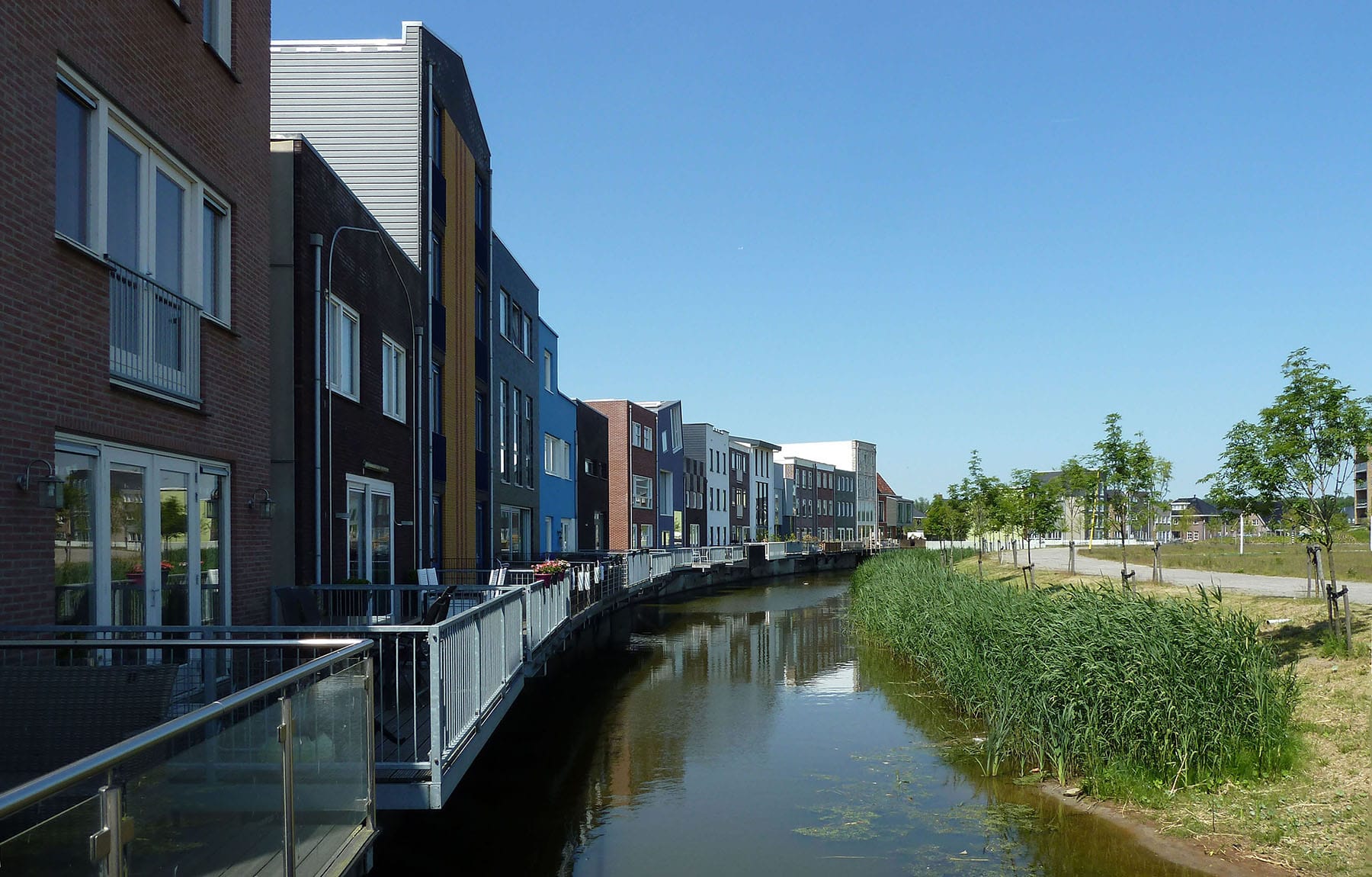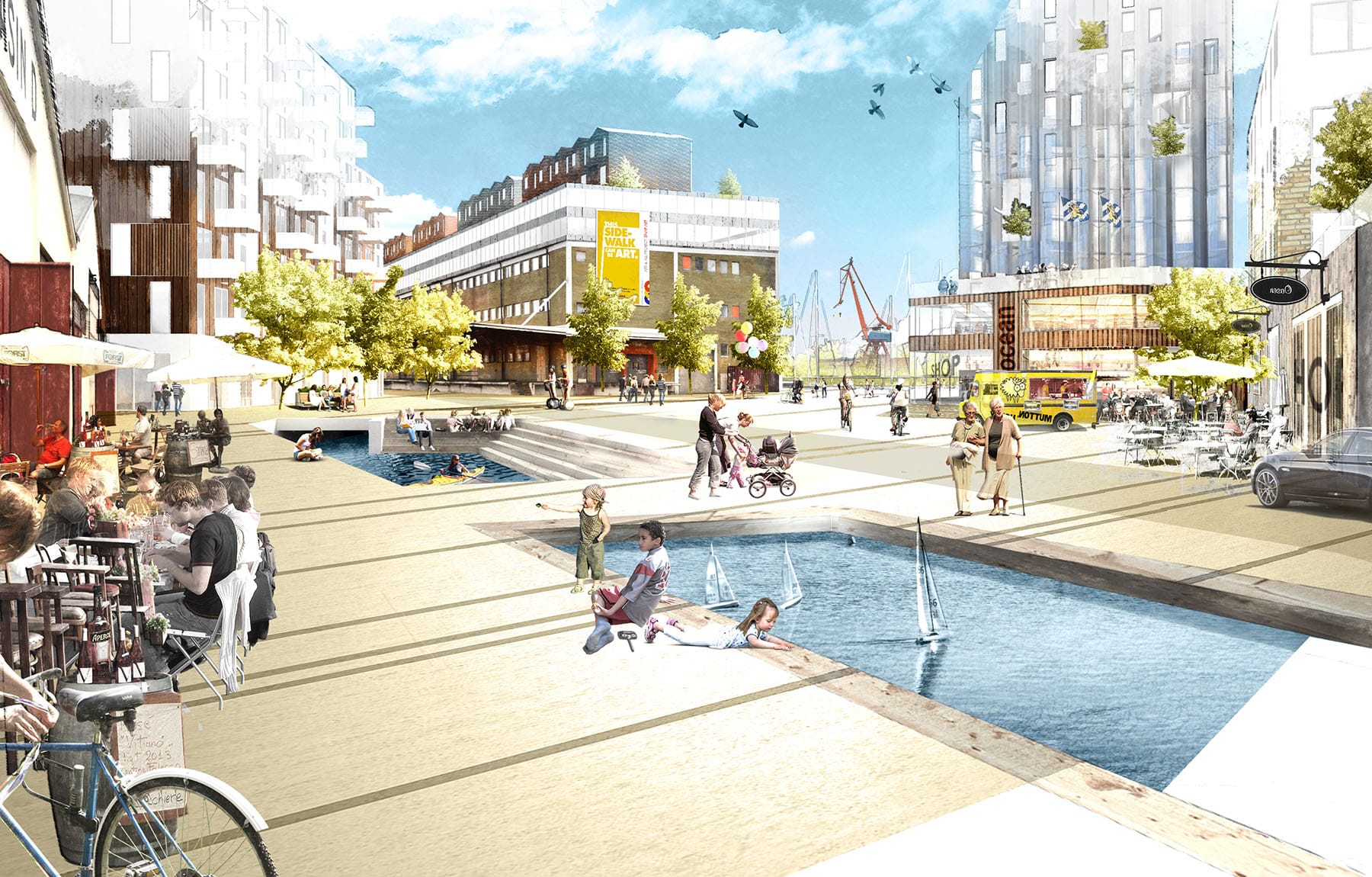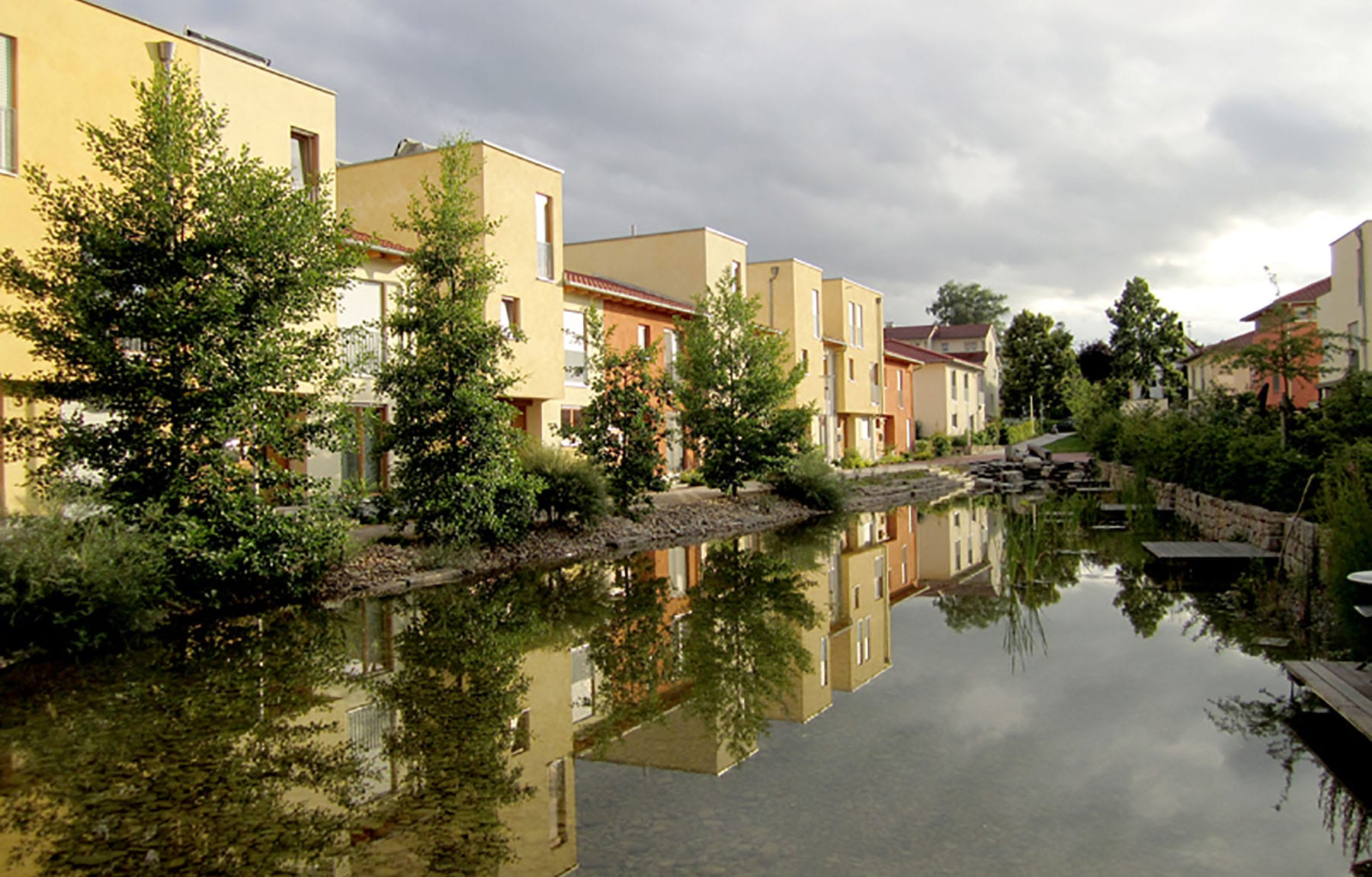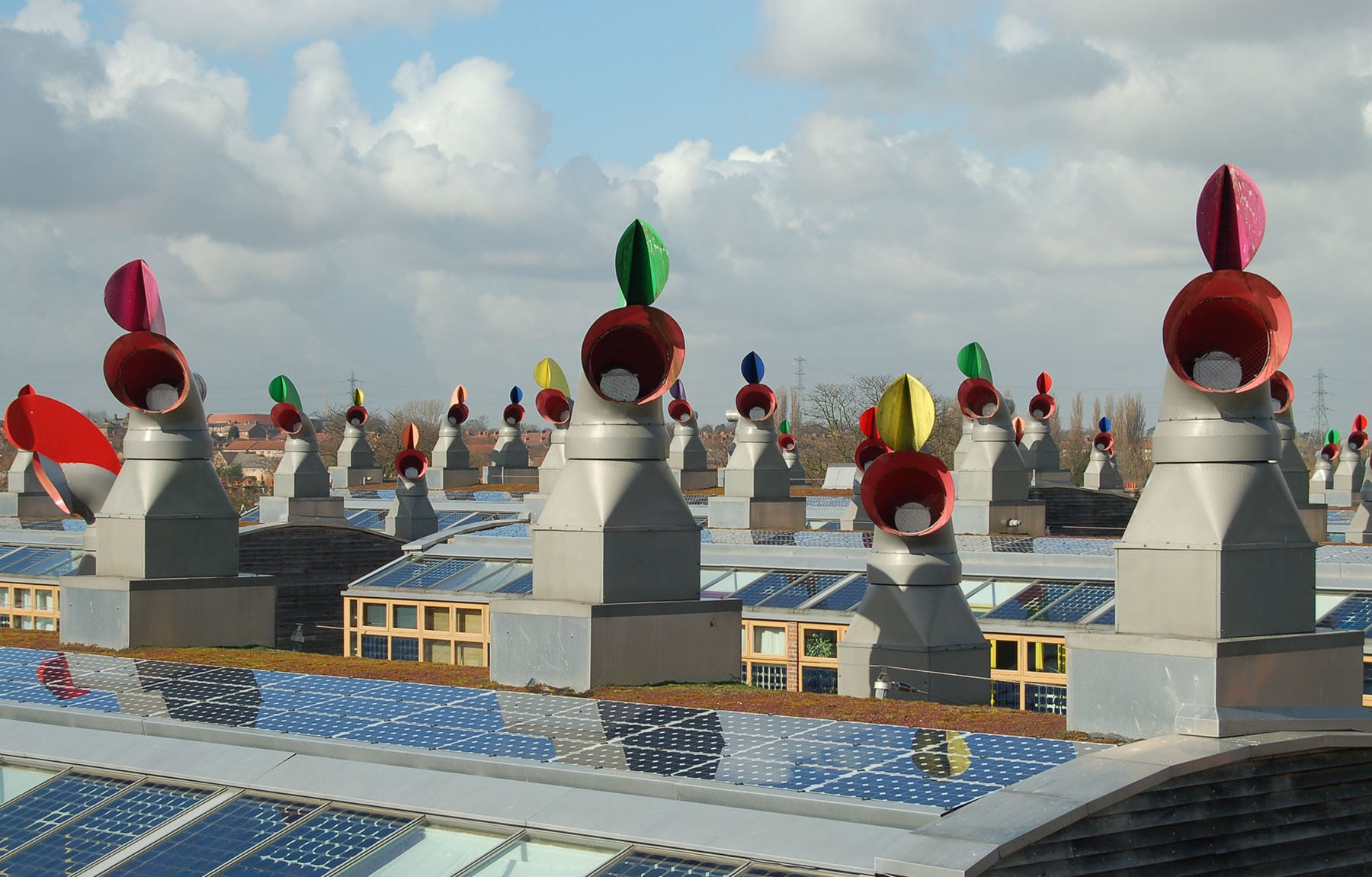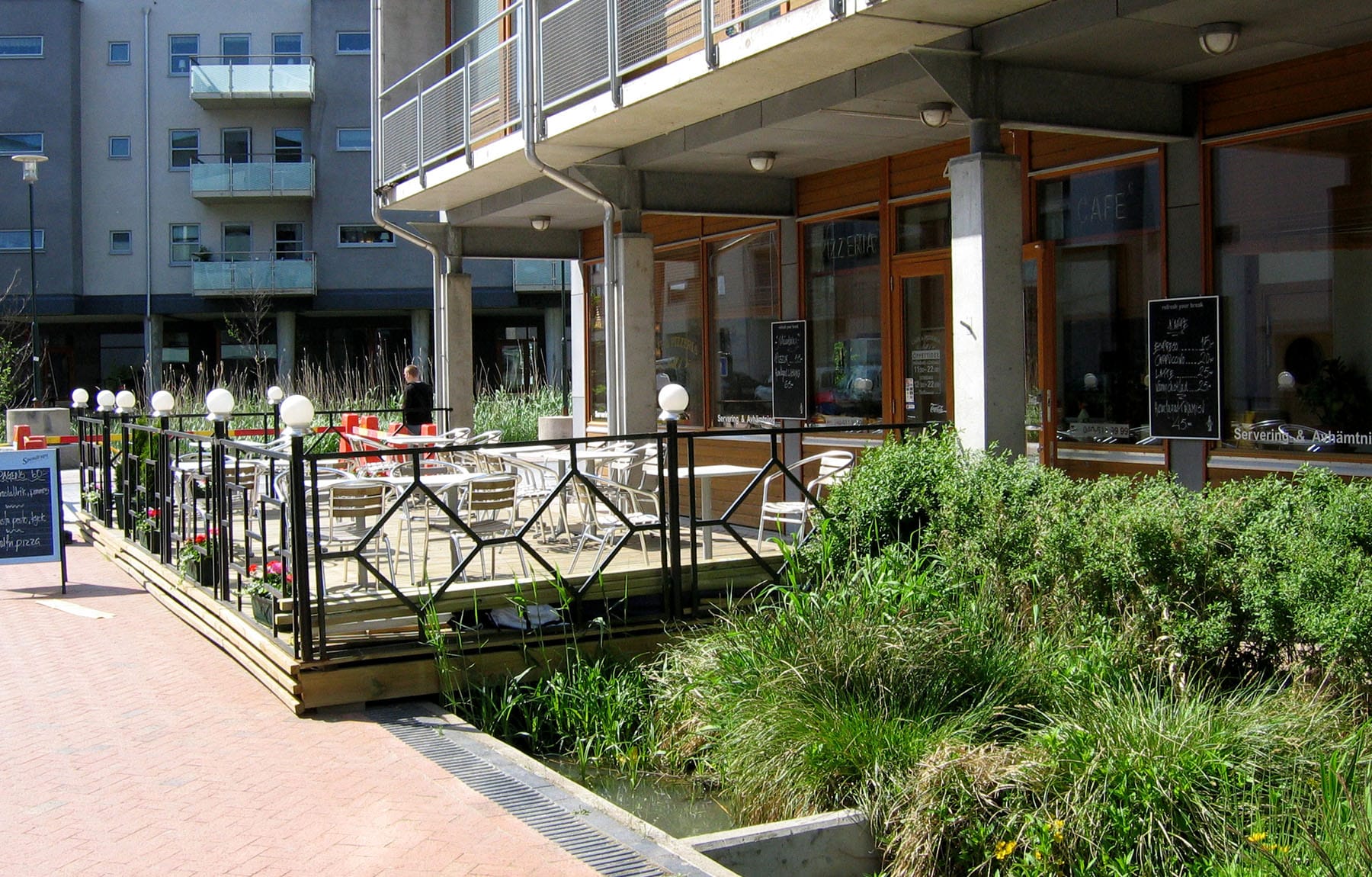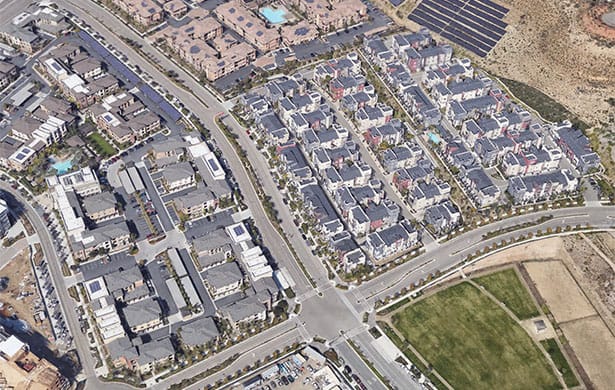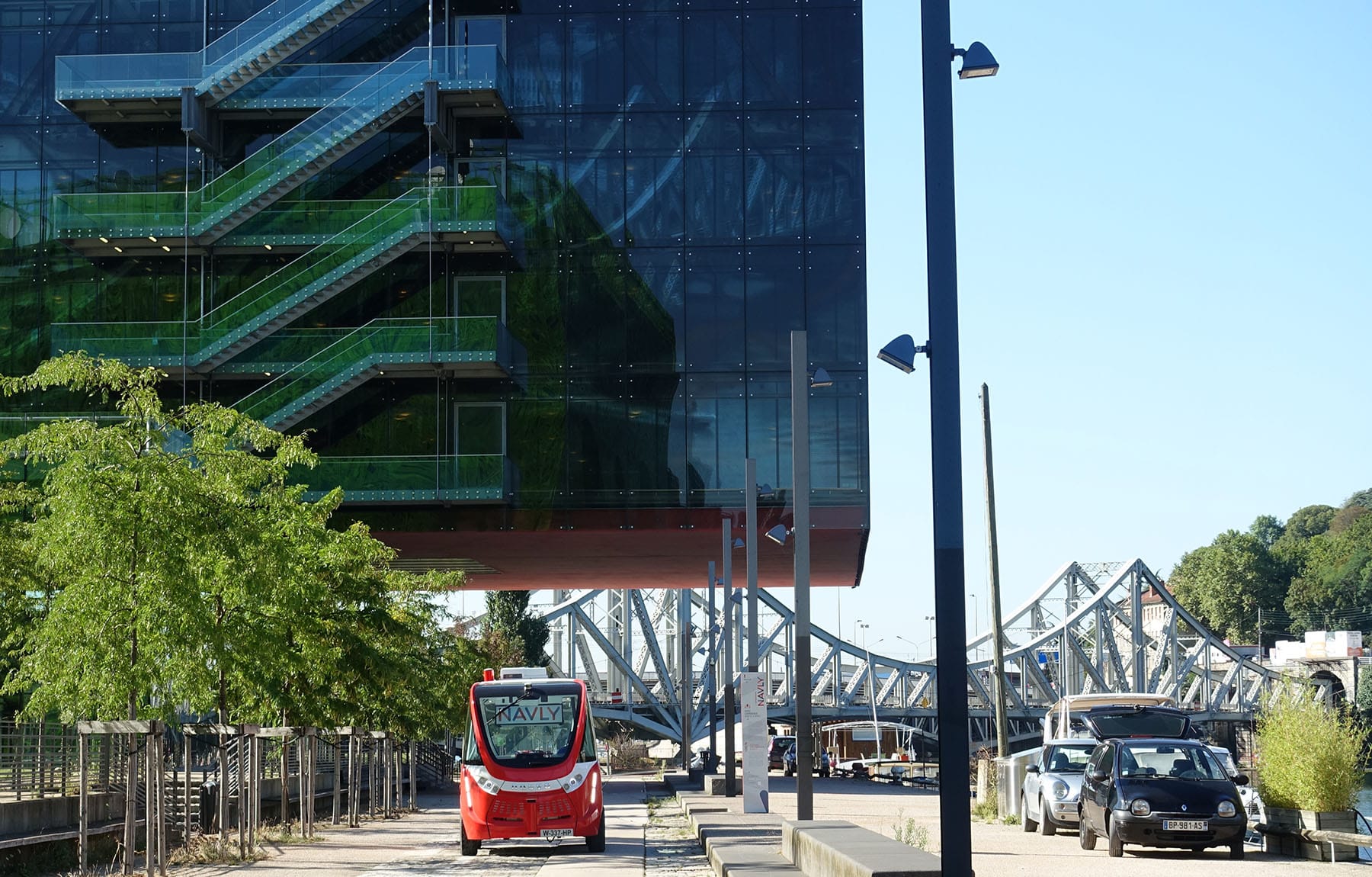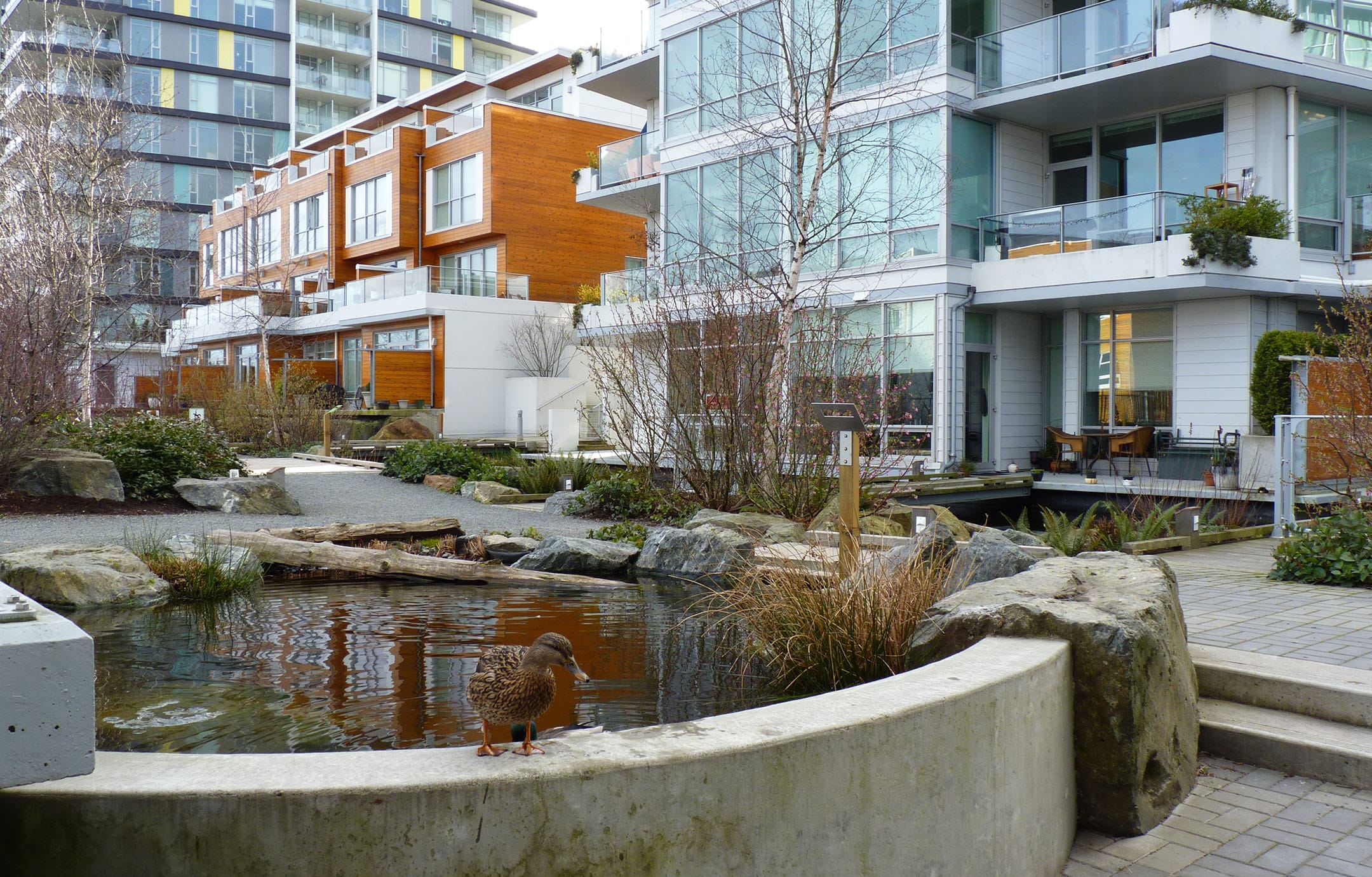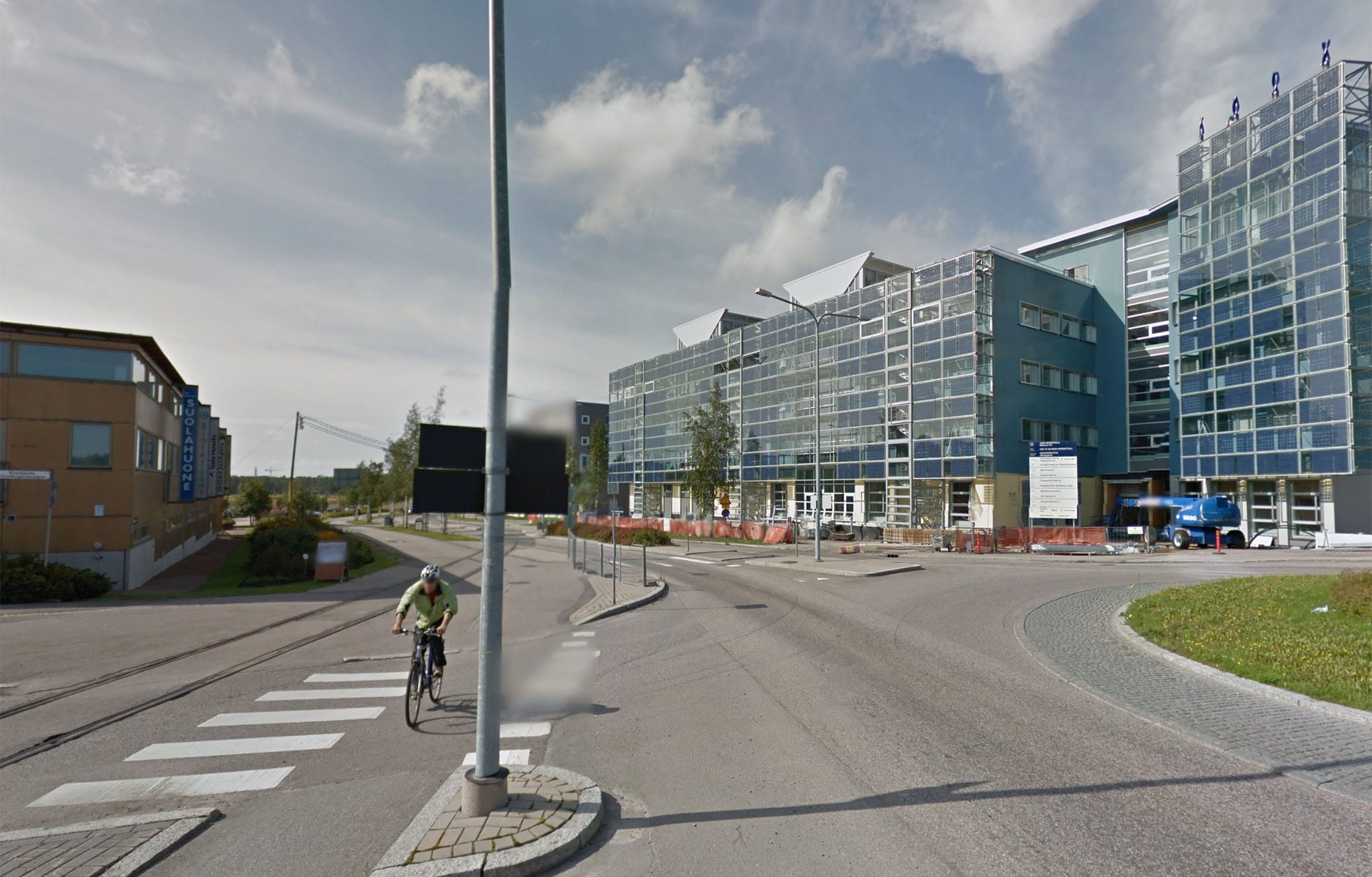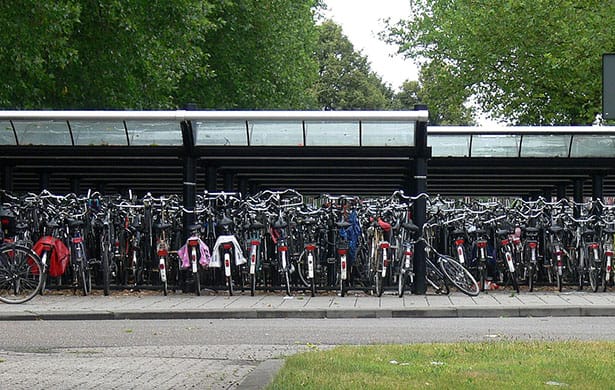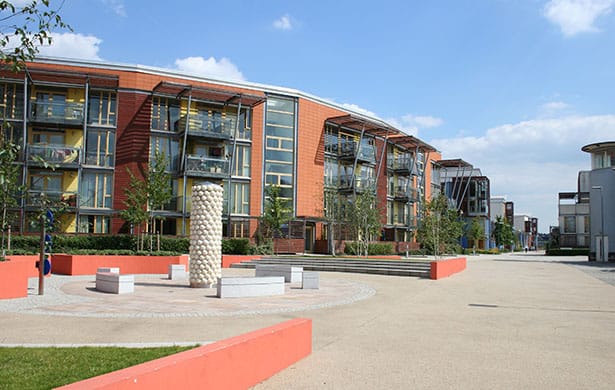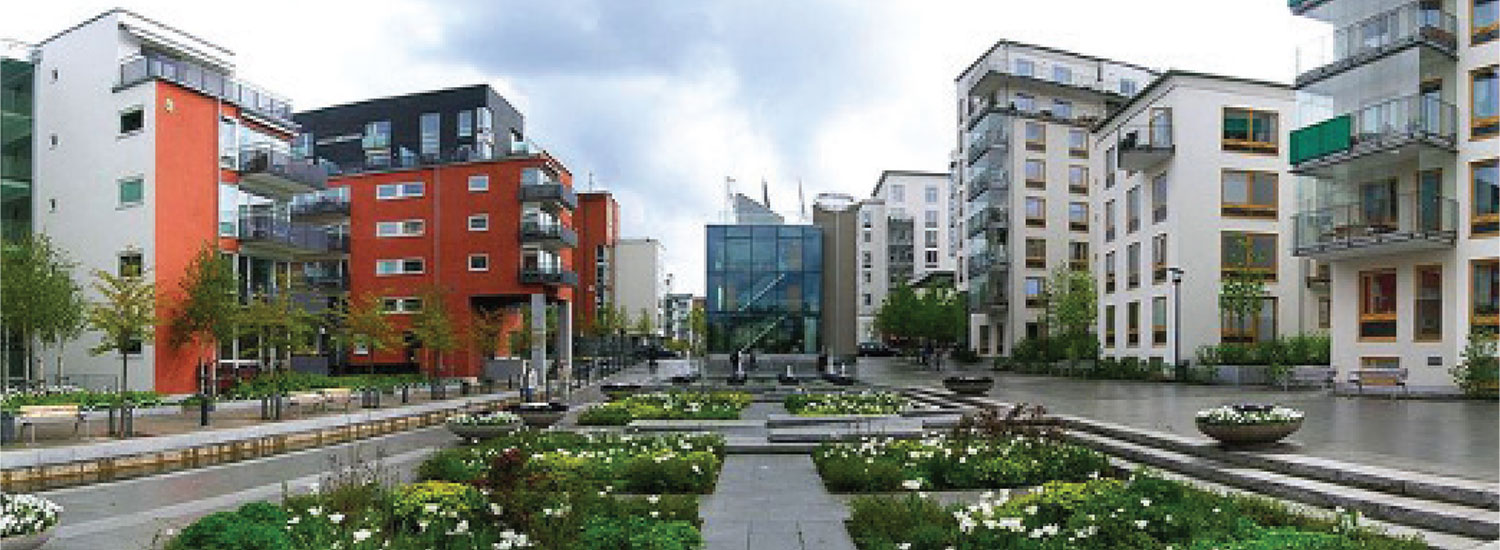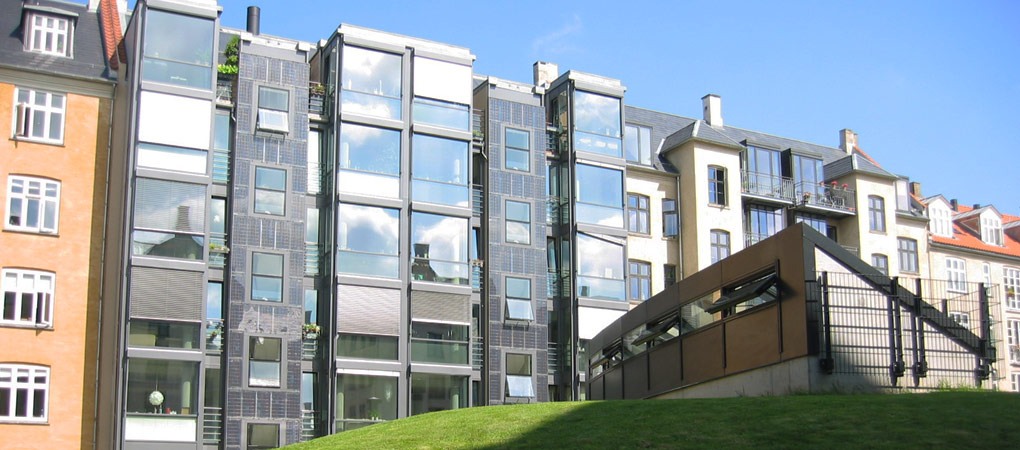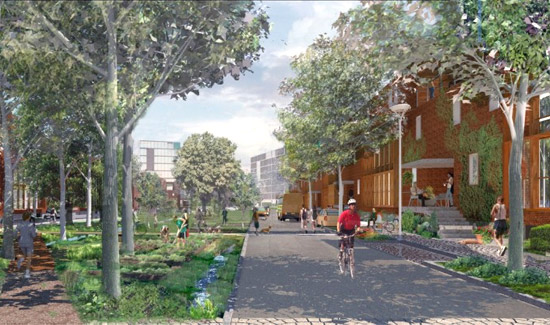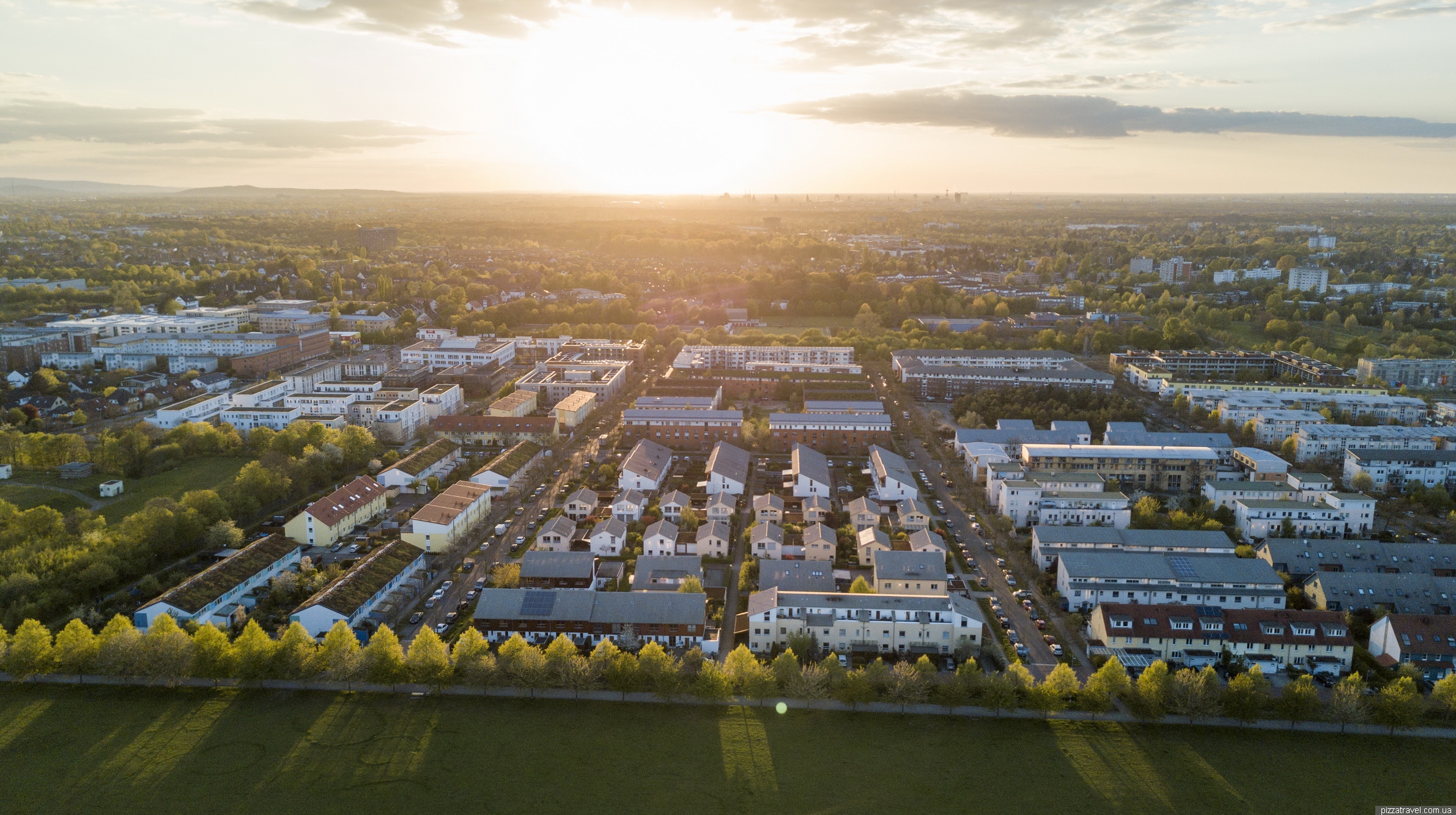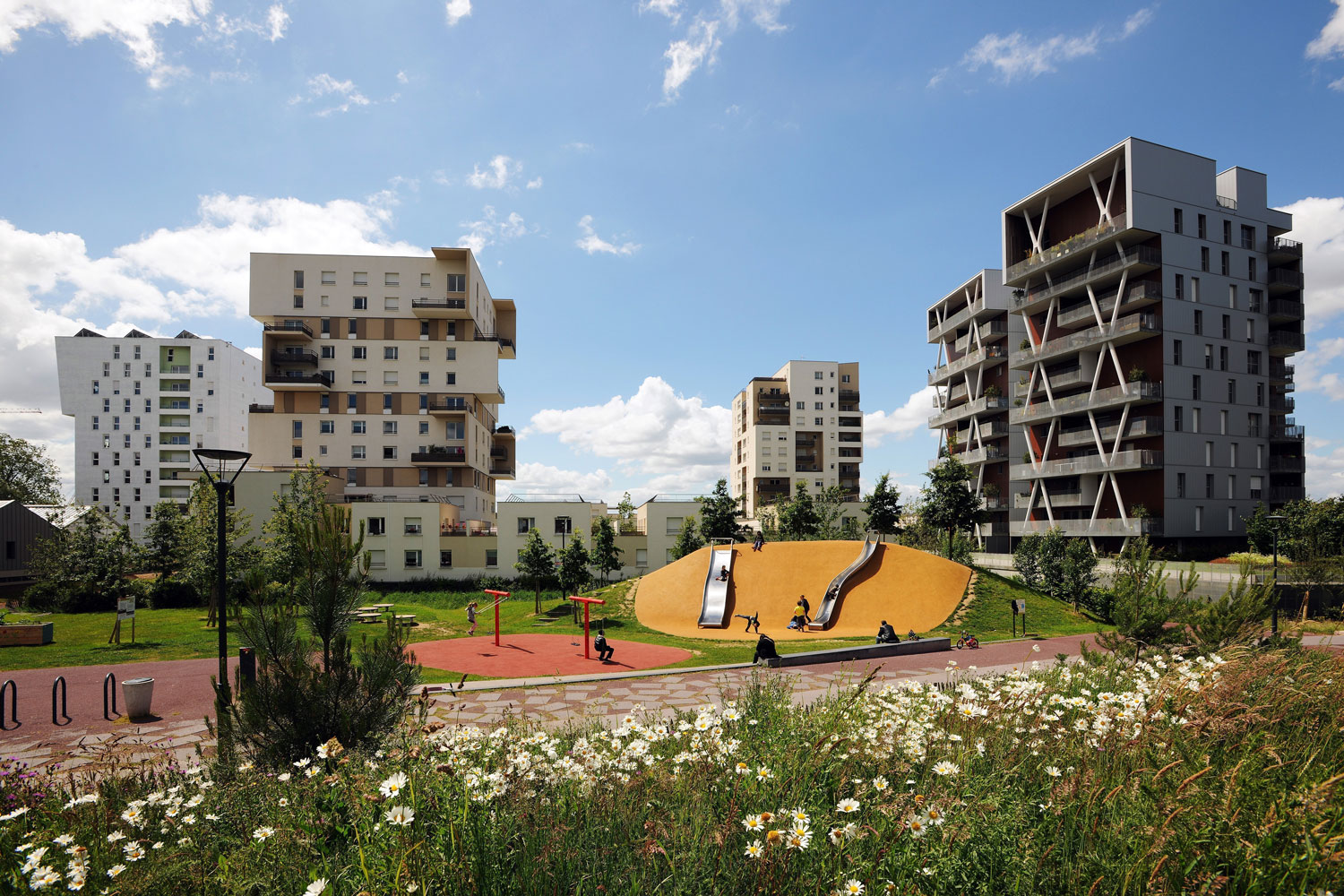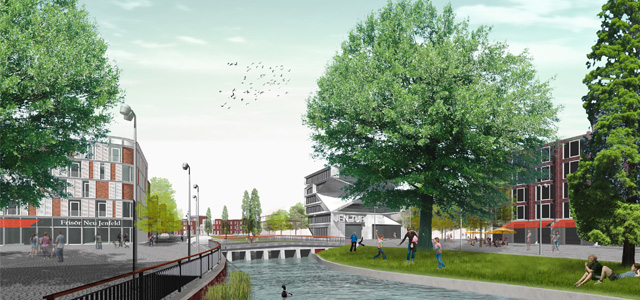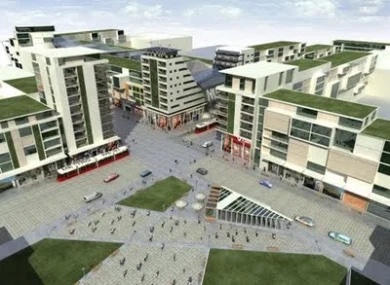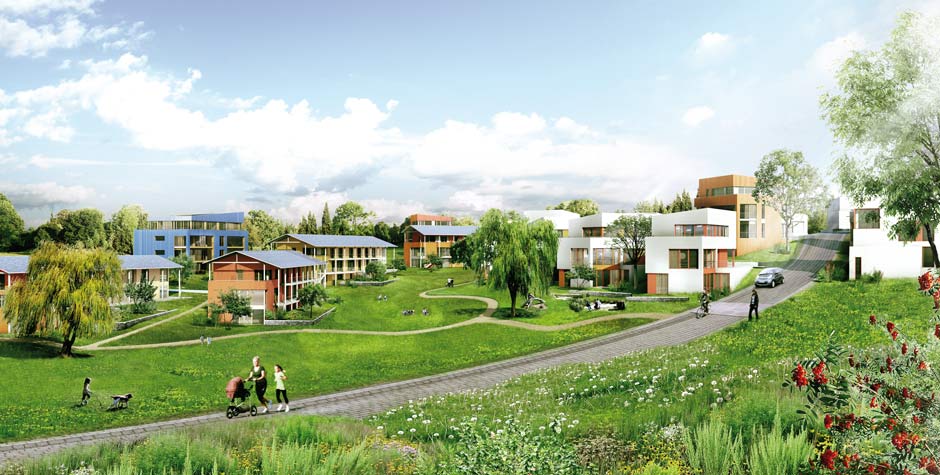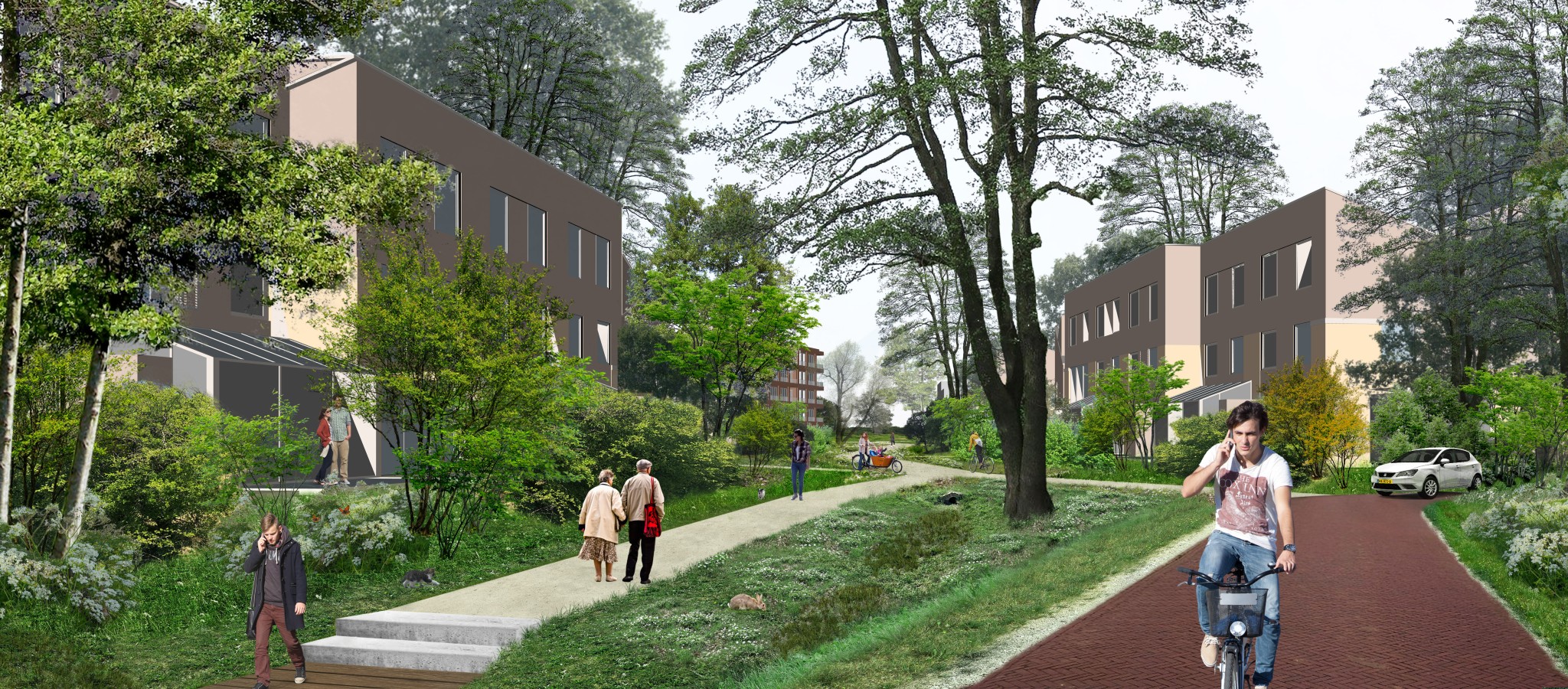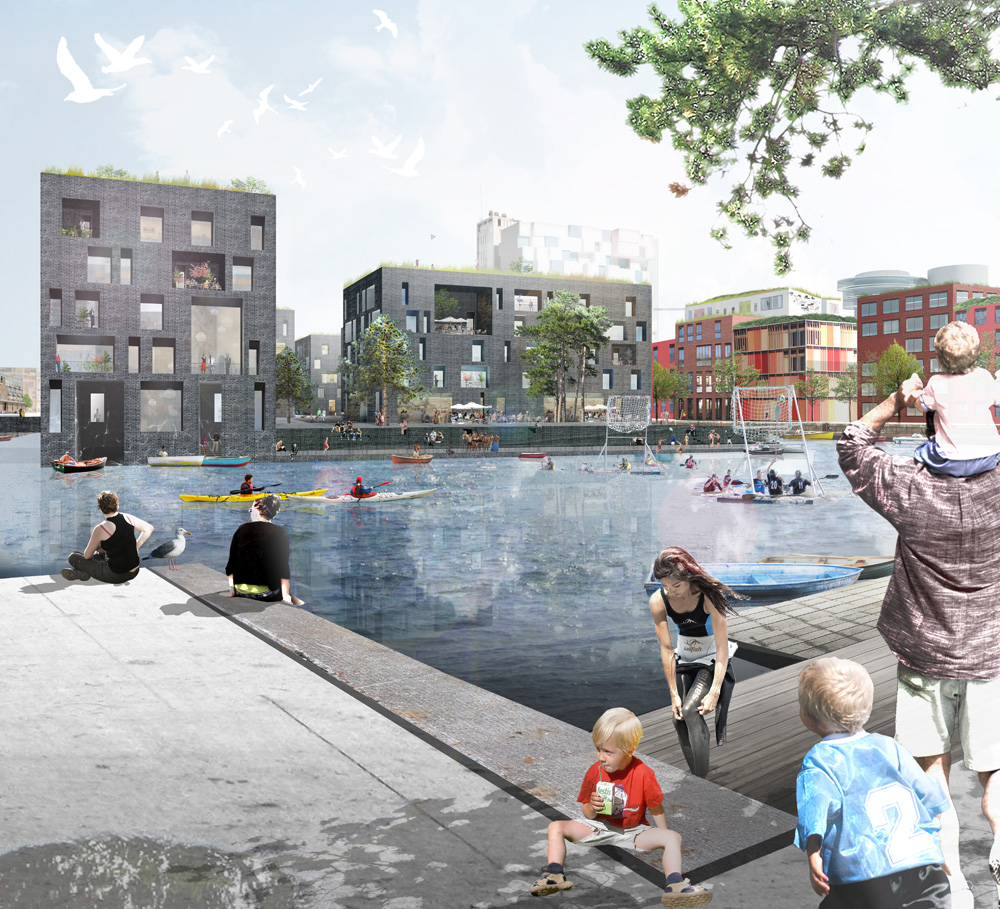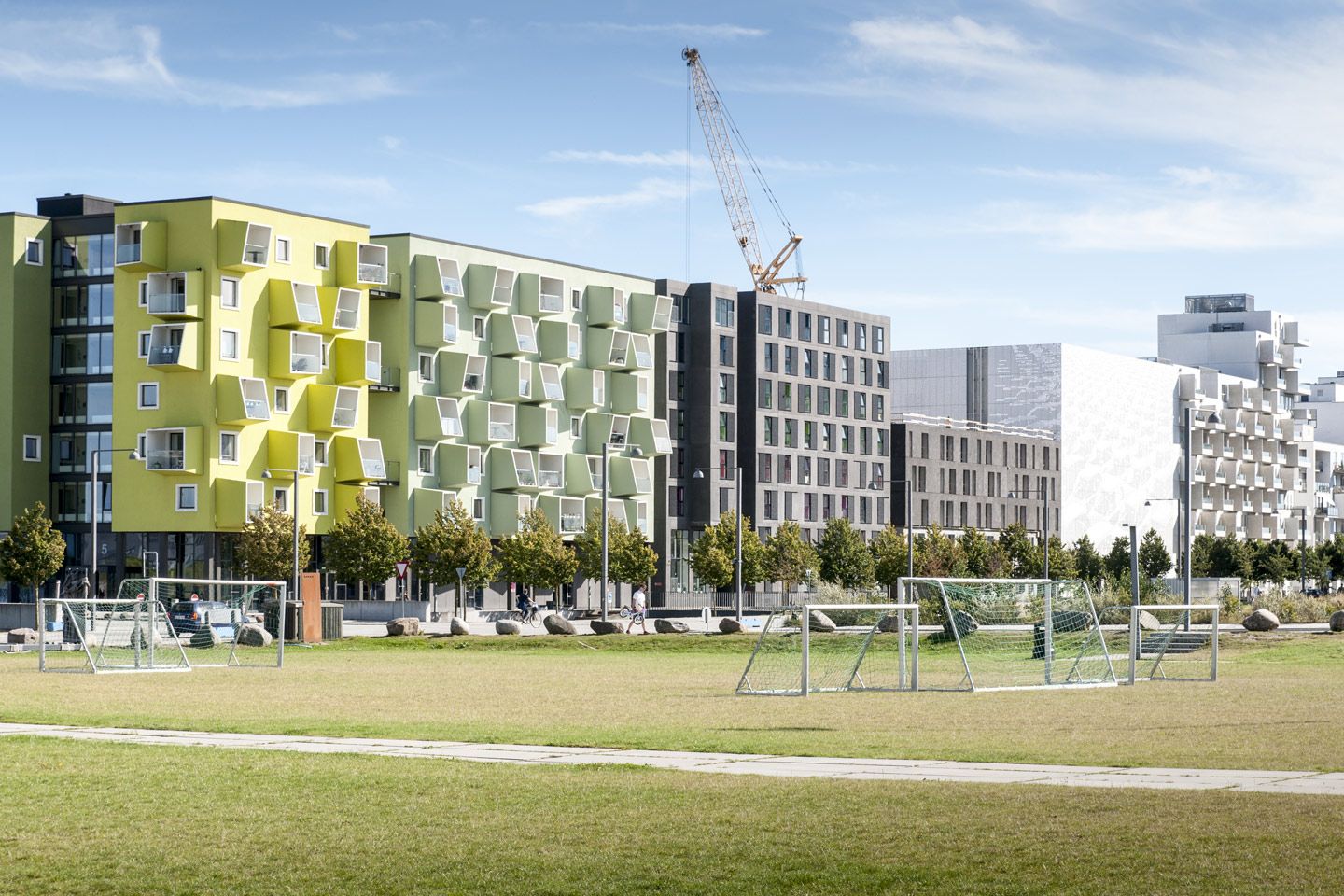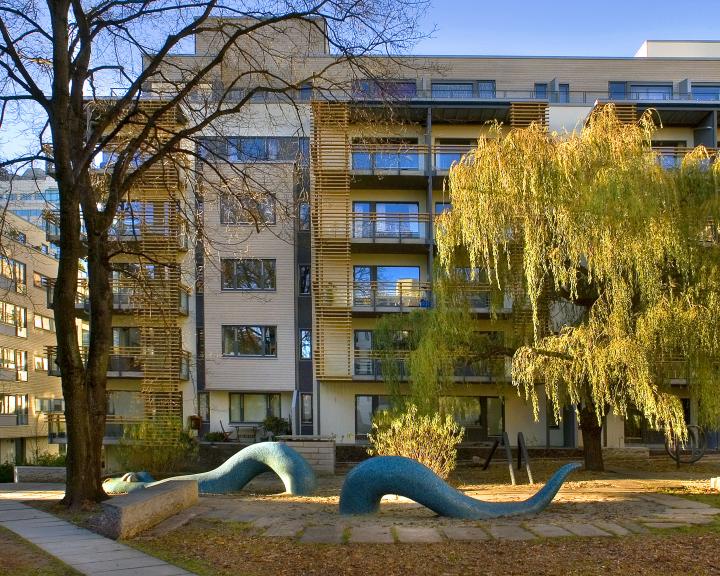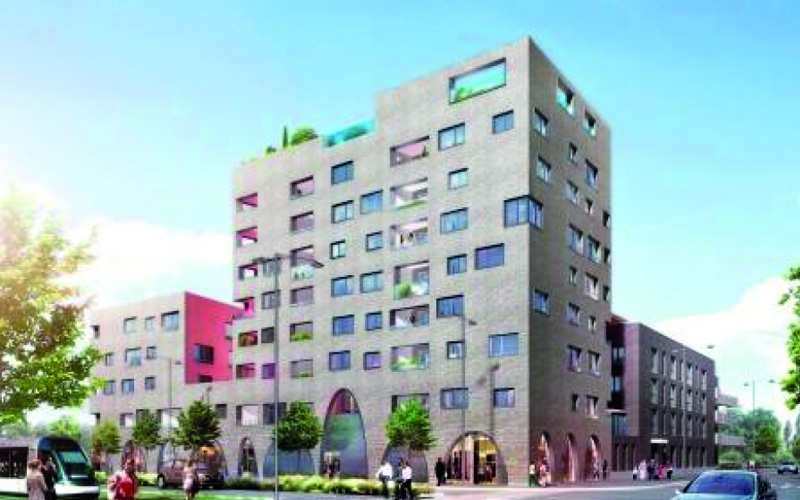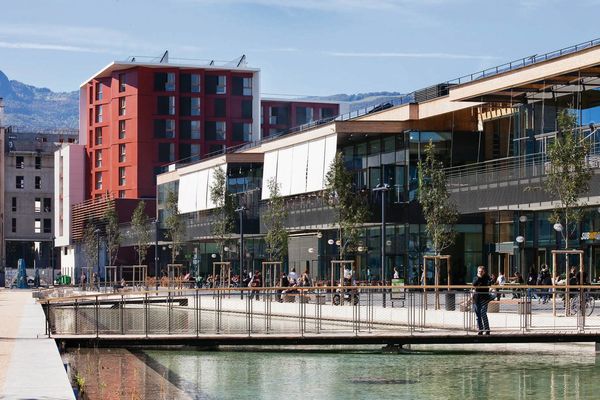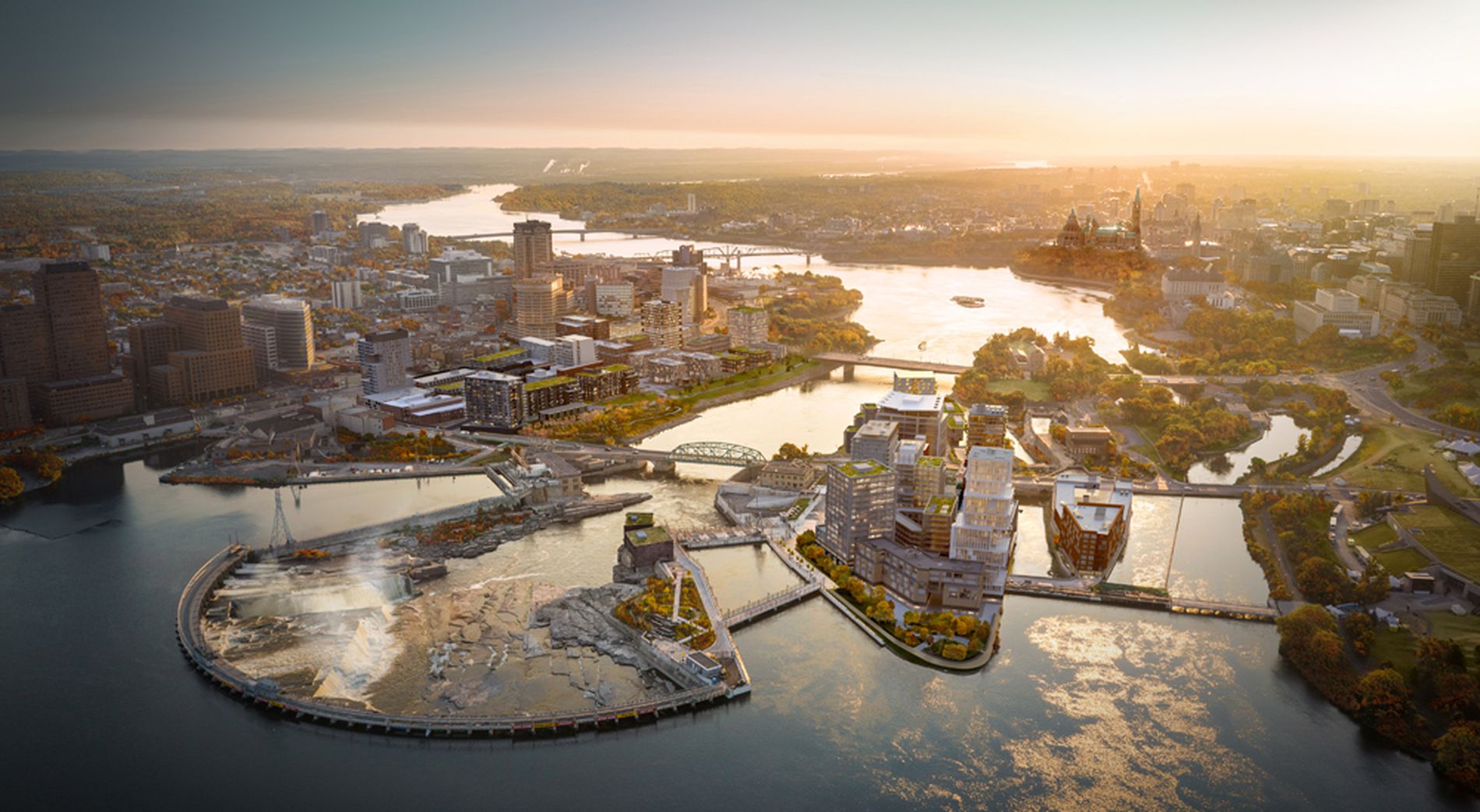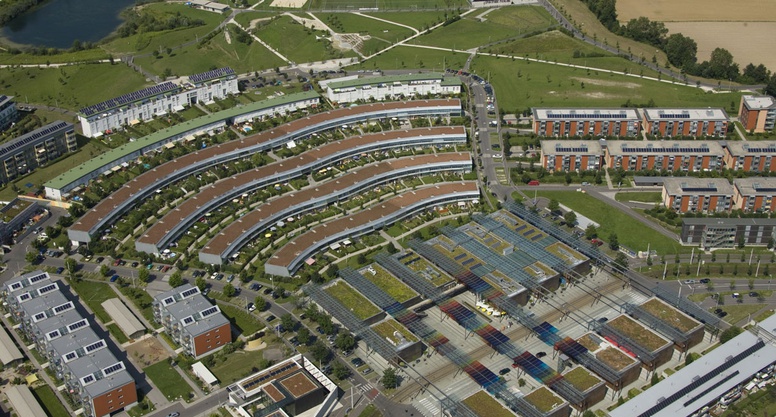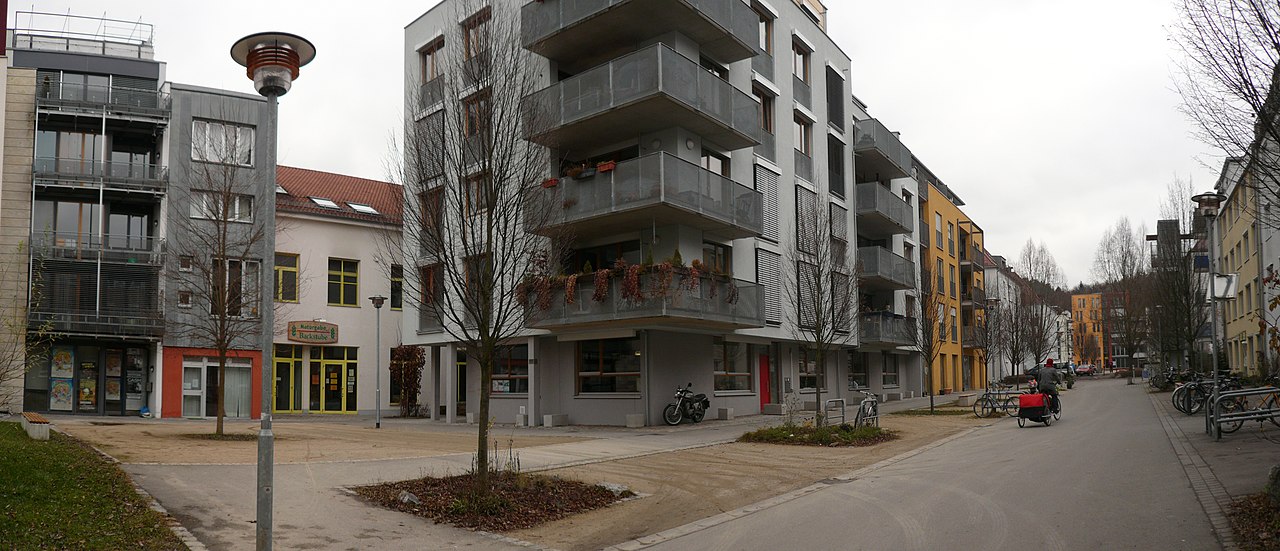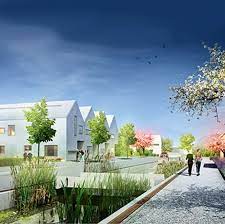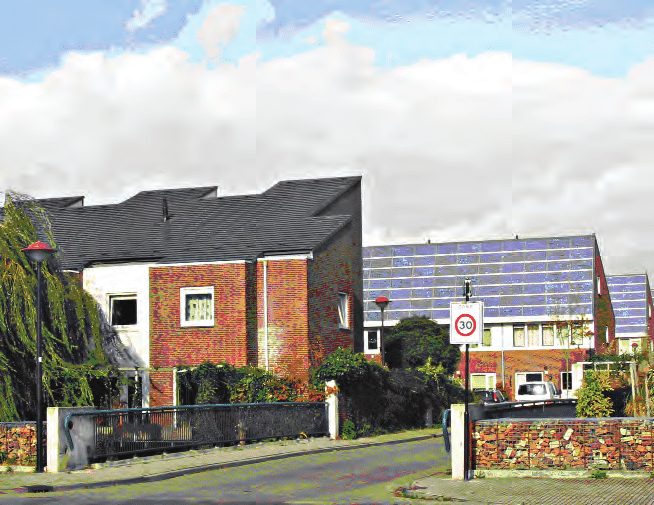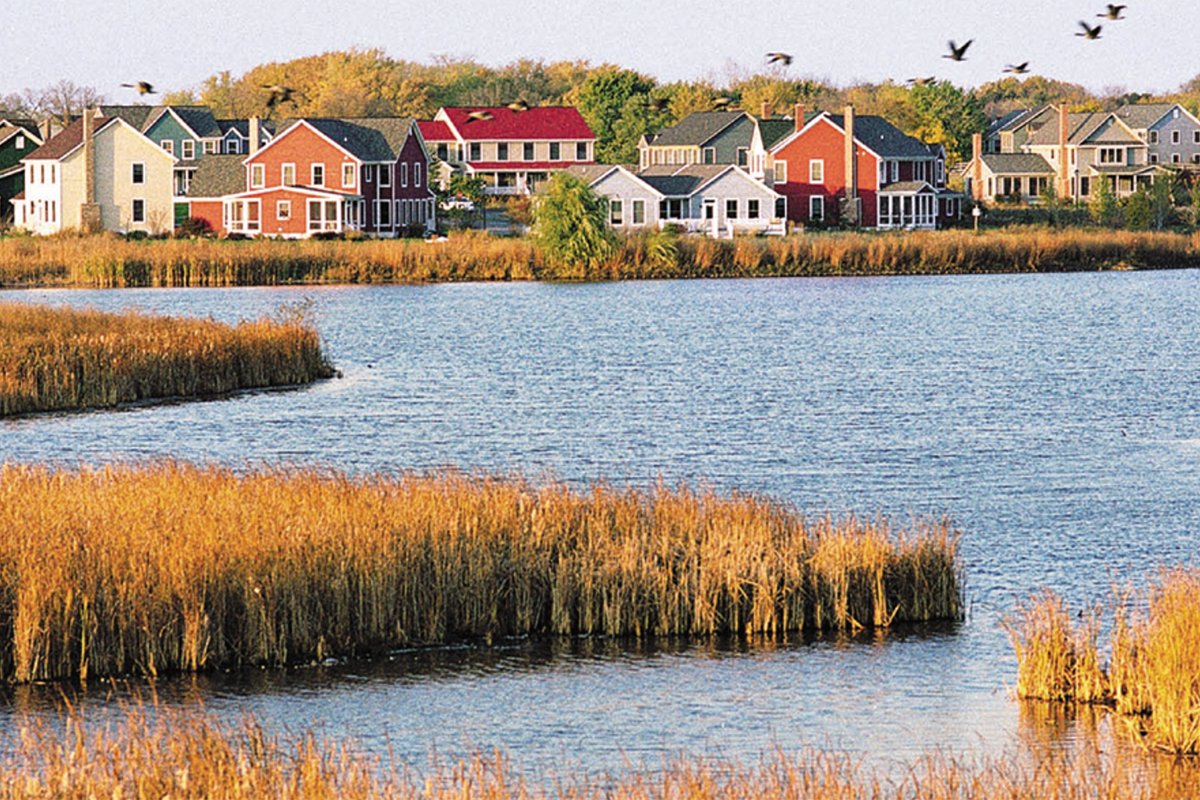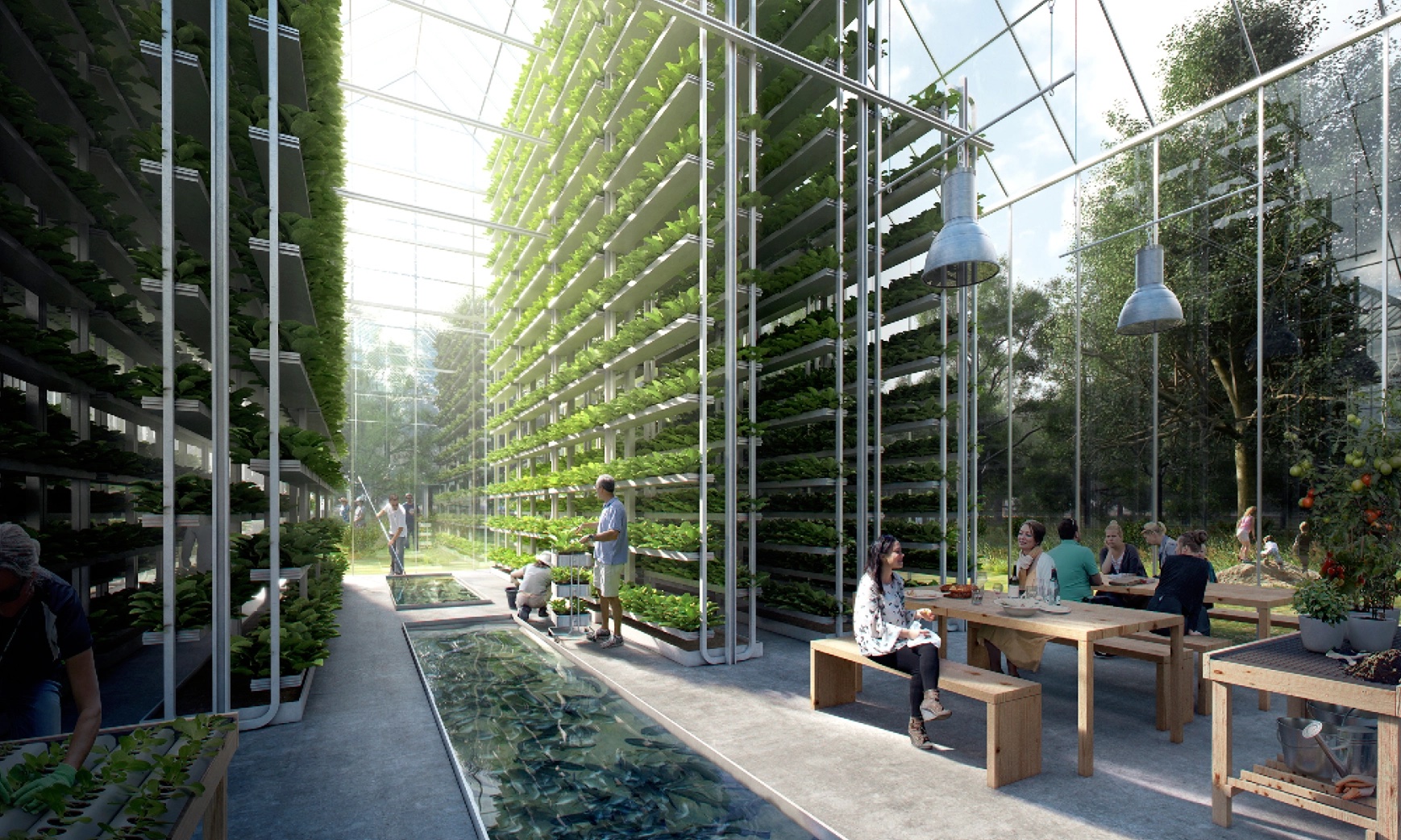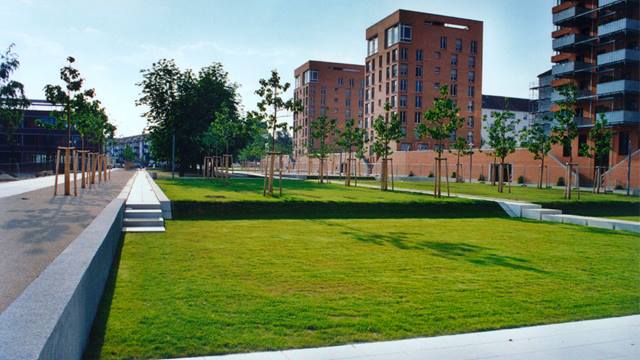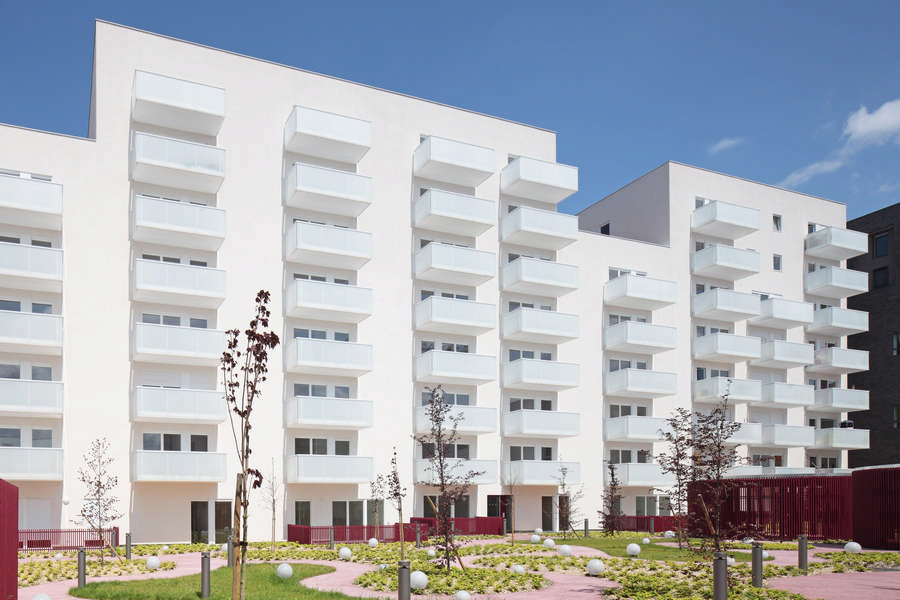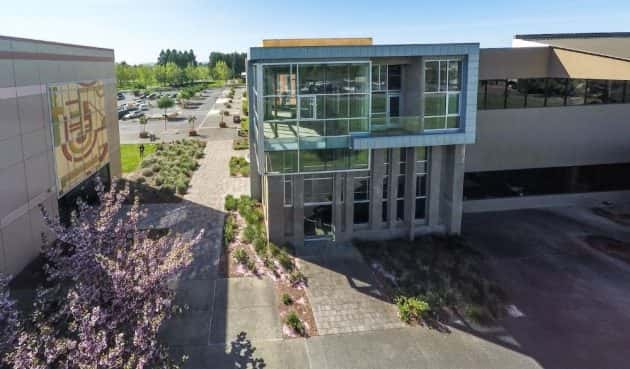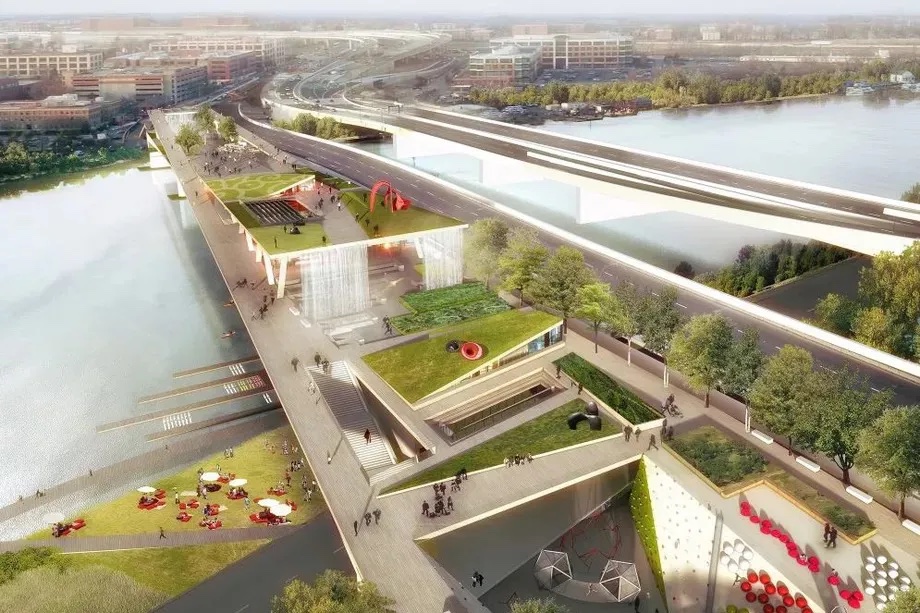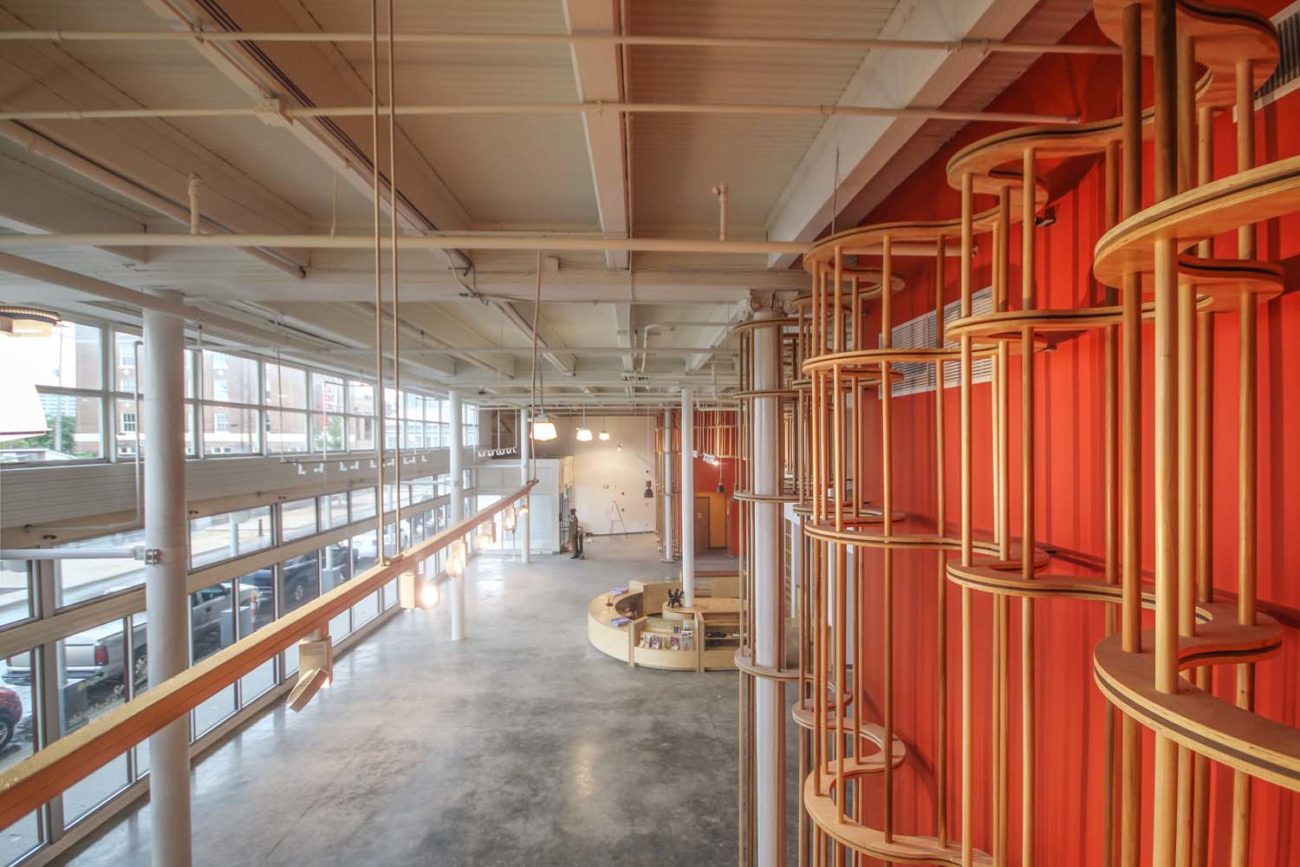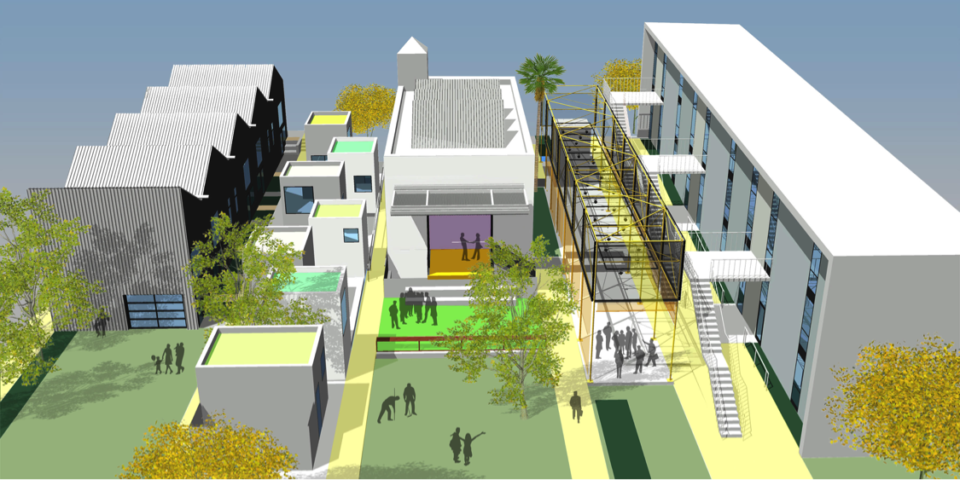The 21st Century Design challenge in the Equity category is to shift the paradigm from one focused on doing less harm to one that embraces our role as steward and co-creator of a true living future for all.
The category seeks to transform how we think about every single act of design and construction. It encourages us to see these acts as opportunities to positively impact the cultural fabric of our human community. The regenerative standard allows equitable access and treatment to all people, regardless of their physical abilities, age, or socioeconomic status.
Based on the Equity Petal of the Living Buildings Challenge.
Equity Assessment Factors:
Neighborhood & Access
This Assessment Factor examines the ways design can create human connections and enhance access for all.

ASSESSMENT CRITERIA:
| Standard | Good | Better | Living Community Principles | Regenerative |
|---|---|---|---|---|
| Not focused on pedestrian-oriented, human-scaled spaces.2 No effort to include existing community in programmed usage. Control of both interior and exterior spaces is exclusive. No attempt to integrate into language and landscape of neighborhood.1 | Some elements of human-scaled design.2 Design acknowledges physical context of neighborhood. Beautified street frontage. Neighborhood support pledge is made.1 | Designed throughout to create human-scaled places. Promotes culture and interaction.2 Design acknowledges physical, social, and cultural context of neighborhood and promotes interaction among cultures. Public approach to street front includes active communal spaces. Aversion to crime fostered through environmental design tactics. Community Benefits Agreement put in place.1 | NEIGHBORHOOD PERMEABILITY & ACCESS All interior spaces programmed to accommodate public need. Full ground-floor public accessibility throughout development. Communal space supports local functional needs of the built environment, focused on the immediate neighborhood. Community Benefits Agreement includes binding language creating community access.1 HUMAN SCALE AND HUMANE PLACES Project is designed to create human-scaled places. Promotes culture and interaction. Meets Living Community Challenge specifications.2 | Civic and communal spaces actively contribute to equitable distribution of the functional needs of the built environment, as determined by those within the neighborhood as well as the extant community.1 |
Access to Nature
The Access to Nature Assessment Factor examines the ways in which the development can foster equal access to natural resources across the community.

ASSESSMENT CRITERIA:
| Standard | Good | Better | Living Community Principles | Regenerative |
|---|---|---|---|---|
| Limited access to parks or green spaces, minimal landscaping, no daylighting requirements for buildings.2 Use delimited by hours of operation or lack of amenities—restrooms, water fountains, benches.1 | Access to parks, promotes sense of place, some daylighting strategies for buildings.2 Promotes community coherence. Amenities encourage use for all ages and those with various needs.1 | Landscaping is innovative, promotes sense of place, includes access to parks, community agriculture and daylighting of buildings.2 Daylighting strategies for buildings actively involve neighborhood collaboration in design and use strategies.1 | Universal Access to Nature and Place All transportation, roads, and nonbuilding infrastructure must be modes universally accessible to the public. Public realm enhanced through design measures. Designs meet ADA and ABA (Architectural Barriers Act) requirements. Provides access to, and will not diminish the quality of, fresh air, sunlight, and natural waterways. Addresses any noise audible to the public. Sunlight may not be blocked above a maximum height (based on density). Provides access to and along natural waterways.2 Access to parks promotes sense of place and is supported by strong community-driven programming. Educational internships and entry-level jobs support community youth engagement in public space use and maintenance.1 | Park spaces continually evolve with public participation. |
Access to Community Services
This Assessment Factor evaluates the impact of design on equal access to community services.

ASSESSMENT CRITERIA:
| Standard | Good | Better | Living Community Principles | Regenerative |
|---|---|---|---|---|
| Travel to service and community centers dependent on vehicles.2 No community outreach or engagement.1 | Some services and community centers accessible by bike or walking.2 Community services access included in basic scope of design with some programming and predesign services. Elevates the baseline requirements for community engagement, as determined by local governing body; engagement is in-depth.1 | Diversity of services available in community and easily accessible by different modes of transportation.2 Contracted consultant and/or staff time allocated to community engagement and report-back. Opportunity provided for community to intervene in the site prior to construction. Community Benefits Agreement put in place.1 | Universal Access to Community Services Provides access to basic services and amenities—places to shop, congregate, work, and learn—within 1/2 mile directly, or within 2 miles if direct public transportation accessible within 1/4 mile. Community must have a public transit network (range and capacity based on density of community).2 Dedicated staff person allocated to robust community organizing and report-back within the design and construction process. Collaboration with community artists and organizers to creatively bring the project to public consciousness. Addresses issues of the neighborhood during the design process.1 | Organizing and Outreach Extends scope of services to include a robust predesign and community organizing process. Hires community Design Advocates (community advocates/organizers) to support the civic, cultural, and communal aspects to be embedded in the design concept and future programming of the development. Utilize small-scale, low barrier-to-entry design interventions at the front end to test and build viable accessibility. Actively advocate for policies and procedures that directly benefit current neighborhood.1 |
Investment
This Assessment Factor identifies ways in which developers can move beyond conventional profit structures to bolster community development.

ASSESSMENT CRITERIA:
| Standard | Good | Better | Living Community Principles | Regenerative |
|---|---|---|---|---|
| No philanthropic contribution provided to benefit the project community.2 Design process utilizes policies and procedures to advantage the project without regard for negative consequences created for the larger neighborhood. Seeks a purely financial return on investment.1 | Some philanthropic contributions provided to benefit the project community.2 Design positions some spaces as communal spaces. Addresses the historical conditions that allowed the development to exist; considers the existing building as well as the larger context as a necessary historical point of reference. Project outcomes documented and made publicly accessible.1 | Project continuously provides philanthropic contributions to benefit the project community. 2 Project humanizes community members by positioning some spaces as civic, cultural, and/or communal. Project outcomes documented in a manner that can be used to further the future positive development of the community.1 | Equitable Investment For every dollar of the project cost, half a cent must be donated to a charity.2 Socio-Cultural Feasibility Study used to determine potential project impact.1 | Humanizes community members by positioning all spaces as civic, cultural, and communal spaces. Participates in % for art/civic design programs in the city/town; if such programs do not exist, uses the development as a means to support the creation of one. Forwards a civic design concept that supports the long-term benefit of the community through the sustained economic inclusion of local community groups and businesses. Dynamically adjusts to the outcomes of the project and respective impacts. |
Just Organizations
The JUST Organizations Assessment factor introduces the JUST certification process into community development.
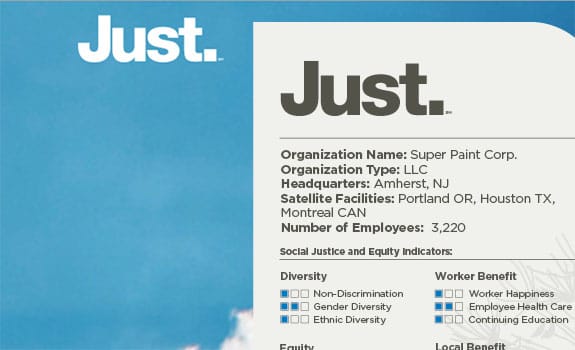
ASSESSMENT CRITERIA:
| Standard | Good | Better | Living Community Principles | Regenerative |
|---|---|---|---|---|
| Entities involved have standard contracts and legal arrangements. | Entities involved use hold-harmless for purposes of project development. | Entities involved use an Integrated Design Process, with a relational contract, hold-harmless agreement, and incentive pool. All entities pay an appropriate living wage. | JUST Organizations At least two project team organizations have JUST label, and advocate for others to obtain a JUST label. Corporate transparency of entities involved. | Organizational and financial structures of all governmental, developmental, educational, and institutional organizations are transparent, inclusive, and representative. |
1 Developed by Colloqate Design
2 Derived from the Living Community Challenge Imperatives
